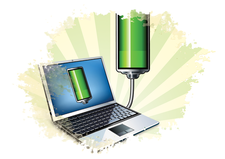Tools for optimizing Linux power management
The Frugal Penguin

Linux offers several tools that help users analyze the power consumption of hardware components.
A computer consists of many electronic components. In addition to the motherboard with the processor (CPU) and the graphic chip (GPU), the list includes random access memory (RAM), drives and storage media, card readers, a hard disk controller, sensors, and network interfaces. In the case of mobile devices, the display, keyboard, and touchpad all run on the same battery.
All these components need power. Modern CPUs have different power-saving mechanisms that significantly affect the power consumption and thus the battery life. This article studies some tools that monitor and manage power usage for the system. These tools will give you the information you need to adjust the necessary settings for optimal power usage.
Power Consumption
Power consumption depends on the electronic components enabled and installed in the device and on the programs running on the computer [1]. A small tool by the name of Lstopo [2] visualizes the information on electronic components running on the system (Figure 1). Lstopo is part of the hwloc package of hardware tools that is pre-installed or available in package form for many Linux systems. Communication between the individual components is via the internal I2C bus (see the box entitled "I2C").
[...]
Buy this article as PDF
(incl. VAT)
